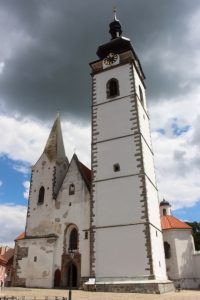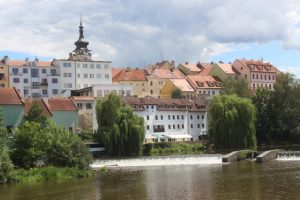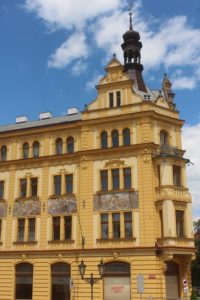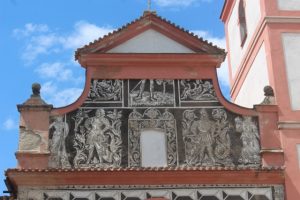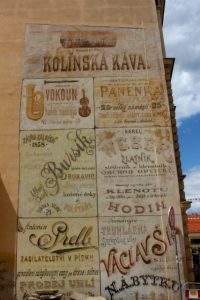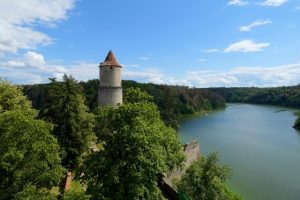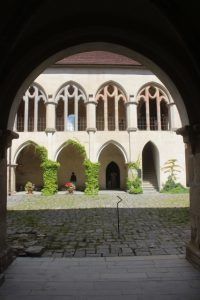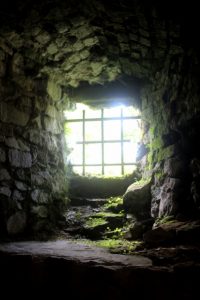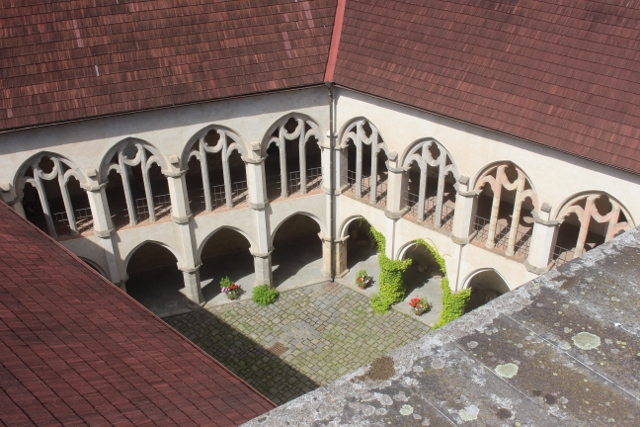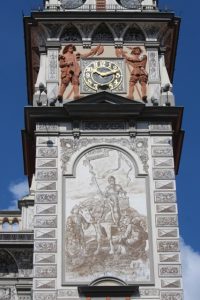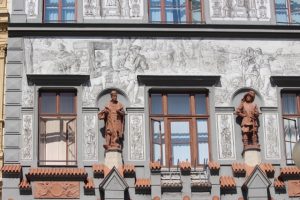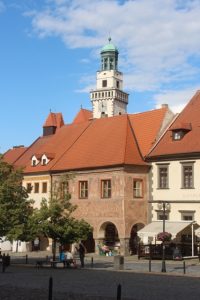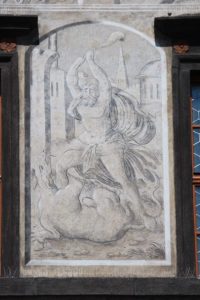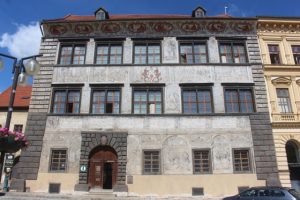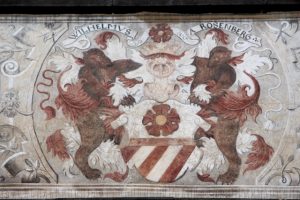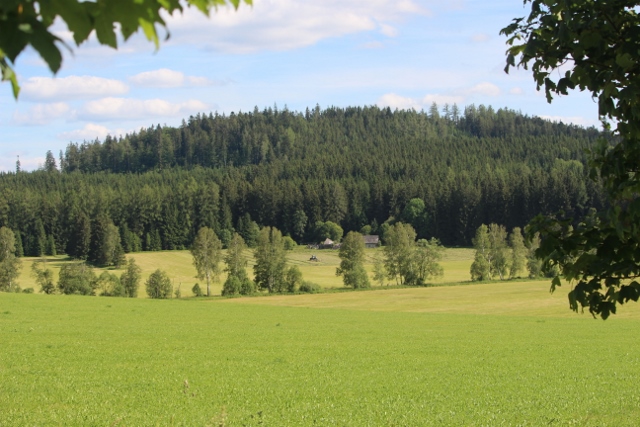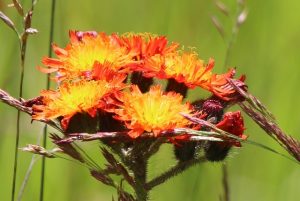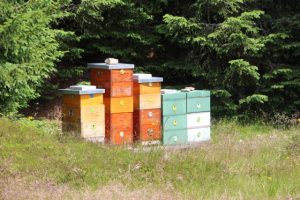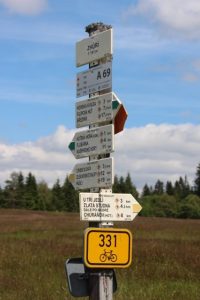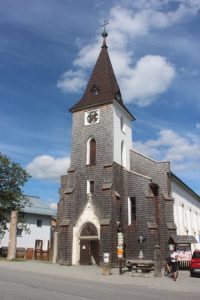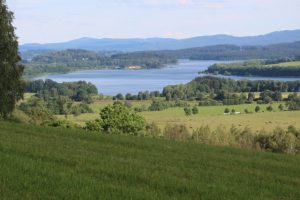Descending into Southern Bohemia, the most touristic province of the Czech Republic, we encouter the lovely twows of Pisek and Prachatice, but also the with tourits overflowing Zvikov castle and the Sumava National Park.
We have established that, indeed, there are few foreign tourists in the Czech Republic, just as we envisaged. But that doesn’t mean that there are no tourists at all in this country; the Czechs are avid travellers, and especially on Sundays!
Pisek is a small town south of Prague, just inside the province of Southern Bohemia. It derives its fame from a medieval stone bridge, no less than 111 meters long, and older than the Karlov bridge in Prague. We came to admire its old town square, which was somewhat disappointing. I suppose everything after charming Loket and the grandeur of Prague is going to be somewhat disappointing. But there is a nice radnice – town hall -, a cute, albeit closed on Sundays, church, and several houses with sgraffito and frescoes.
Charming Zvikov Castle turns out a bit of a popular local tourist attraction, but inside it is in fact quite nice.
According to the English-language tourist office publication on South Bohemia, there are no less than 19 castles in this province. We are not going to see them all, but Zvikov Castle is, apparently, one of the most charming castles, not just in South Bohemia, but in the whole country. I had thought we could walk from Pisek to Zvikov, but this turned out to be some 20 kms. Walkable all right, along the Otava river, but we also had to walk back. So we got in the car, instead, and drove to Zvikov. Only to find ourselves inch at walking pace on the approach to the castle, through the masses who had the same idea as we, but were armed with picknick, children, dogs, bicycles, or a combination of those. It looked like all of Czech Republic had decided to descent on Zvikov today.
The castle itself is some 500 meters from the parking, located on a rocky promontory overlooking the place where the Otava flows into the larger Vltava river. On the way there are several stalls selling tourist trinkets, lucky stones, plastic swords, children’s bow-and-arrows. On the site itself is a bar-restaurant and terrace, an ice cream shop, a children’s playground, and even a children’s theatre. Luckily, inside the building, after the ticket window, it is a lot quieter. And actually, quite nice. The castle has been restored, but not disturbingly so, and wandering through the various courtyards, surrounded by attractive arcades, and through the rooms, some decorated with frescos is not unpleasant.
We had thought to take a boat trip to another castle, Orlik, just downriver on the Vltava, but it transpired that this would take well over an hour, and that there was only one boat back, several hours later. So we skipped Orlik, and moved on to Prachatice.
Prachatice is a wonderful little medieval town, which distinguishes itself through some of the most beautiful sgraffito in the country.
We had selected Prachatice as our base for the next few days. Most of the town is modern, and thus not attractive, but the tiny old centre, which is just a few cobbled streets and the town square, where we had found our hotel, is wonderful. The large, rectangular square is lined with medieval houses, all well maintained, and most notable for their sgraffito – an Italian decoration technique that is based on two contrasting plaster layers, the drawings being scratched in the outer one to reveal the contrast below. For good measure, there are some painted Renaissance facades, too, along the square, which all together is just a very nice place to have a beer on one of the several terraces.
But there is more to Prachatice then just its medieval square. It is also touted as the Gateway to the Sumava Mountain.
Being one of the more popular tourist areas of the country, the Sumava Mountains are pretty busy in early July
The Sumava region, one of the most popular Czech tourist areas, runs a long way along the Austrian and German borders. It is here that the Vltava – otherwise known as the Moldau – originates, with some 430 kms the longest river in the Czech Republic, which runs a little east before turning north towards Prague and then flowing into the Elbe. Part of the area is a National Park, protecting tall pine forest, and for the rest ‘tiny villages blend into the silent hills and meadows’, as my 15-year old guide book has it. There are no more tiny villages anymore, at least not those with old wooden farms; every building in the area seems to be oriented towards tourism.
And tourism is everywhere, walking and hiking, and cycling. The Czechs have, once more, come out in force, and large groups of cyclists, complete families with tiny little children on tiny little bicycles, populate the narrow roads. It is frightening. We park the car, and walk up a hill for a few hours, but here, too, we are seldom alone for more than a few minutes. Czechs without bicycles, but with equally small children, enthusiastically populate the walking tracks, once again often in groups. We manage to escape by diverting from the path, and wander through flower-filled meadows. Which is, in fact, very special experience, the sort of thing you have read about but never encountered.
On our way back we pass Kvilda, a village known for its wooden church – surrounded by more tourists, including ourselves, of course. And we pass the Lipno Lake, an artificial lake in the Vltava, but our idea of having a drink at the lake shore we have to abandon, as the lake is entirely surrounded, it seems, by campings. All of them full (not that we had any intention to camp ourselves).
Hmm. Choosing July 2020 for our travel may have avoided encountering foreign tourists, but this year people, including the Czechs, do take holidays in their own country, too.
next: tourist destination number one for Czech people, Cesky Krumlov.
